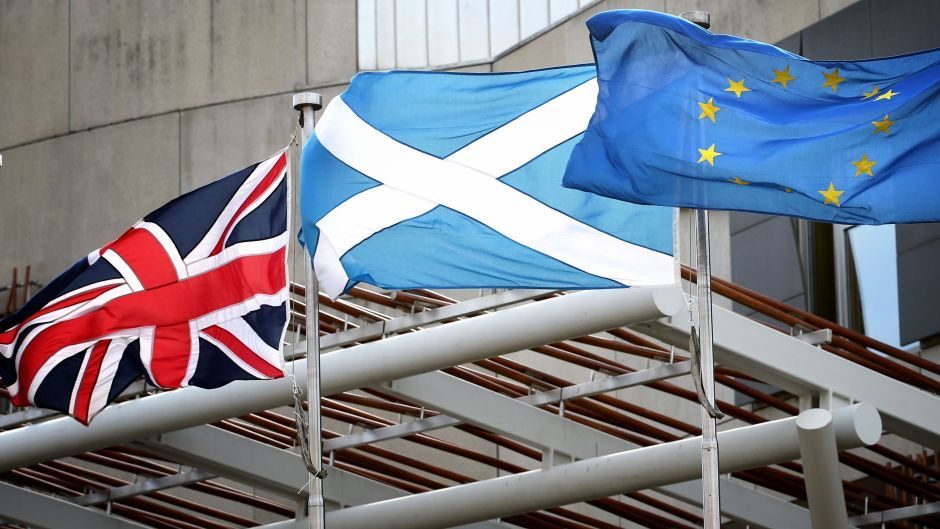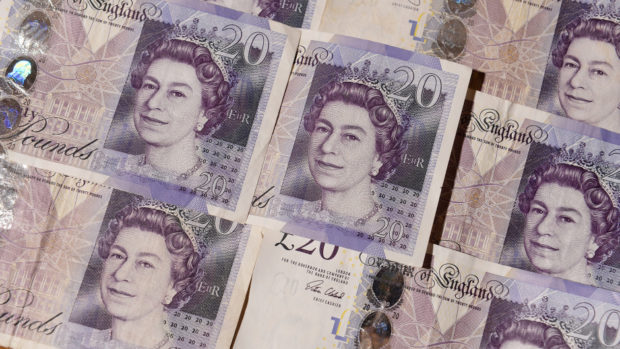The publication of the annual Gers report on Wednesday will likely be seized upon by opponents of Nicola Sturgeon’s SNP government as evidence of failings in the economic case for Scottish independence.
As tock follows tick, supporters of the separatist movement are likely to use the same report to back up their own views, or at the very least use it as the latest ammunition in the political battle for Scotland’s constitutional future.
The figures are widely expected to show Scotland has been living through another year with a deficit north of £10 billion, something opposition leaders will almost certainly cite as proof the country has benefited financially from being part of the UK.
The timing could not be more crucial for the pro-Union side, with poll after poll showing a sustained lead for independence and approval ratings for SNP leader Nicola Sturgeon continuing to rise.
The publication of the report, which has become an annual political event in Scotland, still sparks fierce debate because of what it does – and perhaps more importantly what it does not – say about Scotland’s public finances.
What are the Gers figures?
The Government Expenditure and Revenue Scotland (Gers) report is published every year and estimates the difference between what Scotland brings in and what it spends.
First published 1992 under then-UK Prime Minister John Major, the idea was that the figures would be useful for discussing the issue of devolution.
Conservative ministers in the Scottish Office believed the report would illustrate how much Scotland gains from the UK Treasury versus the tax revenues it contributes, and that this would help make the case against establishing a Scottish Parliament.
That tactic was not as successful as they would have hoped and since devolution was introduced in 1999, the figures have been compiled by Scottish Government statisticians free of political interference.
The report, despite being controversial, remains a key annual event and was described in the white paper leading up to 2014’s independence referendum as “the authoritative publication on Scotland’s public finances”.
The figures were also used as the starting point for the SNP’s Growth Commission report, which examined the financial options for an independent Scotland.
However, the Scottish Government has warned the figures are “notional” and only reflect Scotland’s finances under current constitutional arrangements, so should not be used to make the case for or against independence.
What can Gers tell us about an independent Scotland?
In short, not as much as some people would have you believe.
Opponents of Scottish independence often point to the report as evidence that Scotland is only able to maintain its levels of public spending because it is part of the UK.
Those on the other side suggest it should be seen as proof of the failure to create a successful Scotland within the union, and that it could do better on its own.
However, the figures are only an illustration of the current position in Scotland under the current political arrangements.
It is common to see the report used as evidence of the size of deficit that would befall an independent Scotland but this would only be the case if one imagines public finances being set up exactly as they are within the rest of the UK.
An independent Scotland would almost certainly look to control tax, spending and borrowing powers differently than the current set up, and that makes it more difficult to predict what the country’s finances would look like.
Nicola Sturgeon made this argument recently when talking about the UK Government’s coronavirus furlough scheme, which she suggested an independent Scotland could reproduce, or even improve on, with the proper borrowing powers.
Last year’s Gers report found Scotland had a deficit of around £12.6 billion or 7%, significantly higher than the UK’s 1.1%.
Former MP Andrew Wilson, who headed the SNP’s Growth Commission, has argued Scotland should aim to reduce its deficit to under 3% within the first five to 10 years of Scottish independence.
EU countries are asked to keep a deficit below 3% of their GDP, although this limit is often broken by current members with little consequence. Whether an independent Scotland seeking to rejoin would need to meet this limit remains hotly contested.
How reliable are the figures?
The Fraser of Allander Institute has previously explained how the total expenditure is made up of Scottish and local government services and some UK Government spending allocated to Scotland on a proportional basis.
That includes things such as defence and debt interest but UK welfare spending and pensions in Scotland are also included.
Concerns were previously raised about how revenue – the money brought in through taxation and other means – was calculated because the data were largely estimated from UK figures, rather than being collected from Scotland.
This has been less of an issue in recent years because fees such as Scottish income tax, council tax, business rates, landfill tax, land and building transactions tax, and local authority fees and charges are all now included.

Estimates are not unusual in economic statistics and the Scottish Government confirmed the Gers report “has been assessed by the UK Statistics Authority as being produced in line with the Code of Practice for Official Statistics”.
It said the statistics “have been found to meet user needs, to be methodologically sound, explained well and produced free of political interference”.
A bigger issue this year could be the impact of the coronavirus pandemic. It is not yet clear what this year’s report will bring but the cost of the crisis has been seen across health boards, local authorities and services in recent months.
Scotland will also be given a proportional share of borrowing incurred to fund projects such as the furlough scheme and other UK-wide initiatives to protect jobs.
The biggest financial hits of Covid-19 only began to be felt in the UK from around late March so the figures on Wednesday could be significantly different from the financial picture facing Scotland going forward.
What did last year’s figures tell us?
Scotland’s public spending deficit fell by £1.2 billion last year, meaning the country spent around £12.6 billion more than it raised in taxes.
This was lower than the £13.8 billion deficit estimated for the previous year, and is equivalent to 7% of the country’s GDP. The UK as a whole had a deficit of £23.5 billion, or 1.1% of its GDP.

Scotland has historically carried a deficit because of the high level of public spending required to provide services to remote areas with smaller populations. A large increase on Wednesday could mean cuts to local budgets.
The Office for National Statistics now produces regional breakdowns that show outside of London and the east and south east of England, most parts of the UK raise less in revenue than is spent on their behalf.
While the Gers report showed Scotland’s tax take was about £307 per person less than the UK and spending was about £1,660 per person higher, only London and the surrounding areas are thought to raise more per head than Scotland.
Predictably, there was disagreement over whether the figures illustrated the “strength” of Scotland’s economy or a black hole at the heart of the country’s finances. Similar arguments should be expected when this year’s figures are published.


